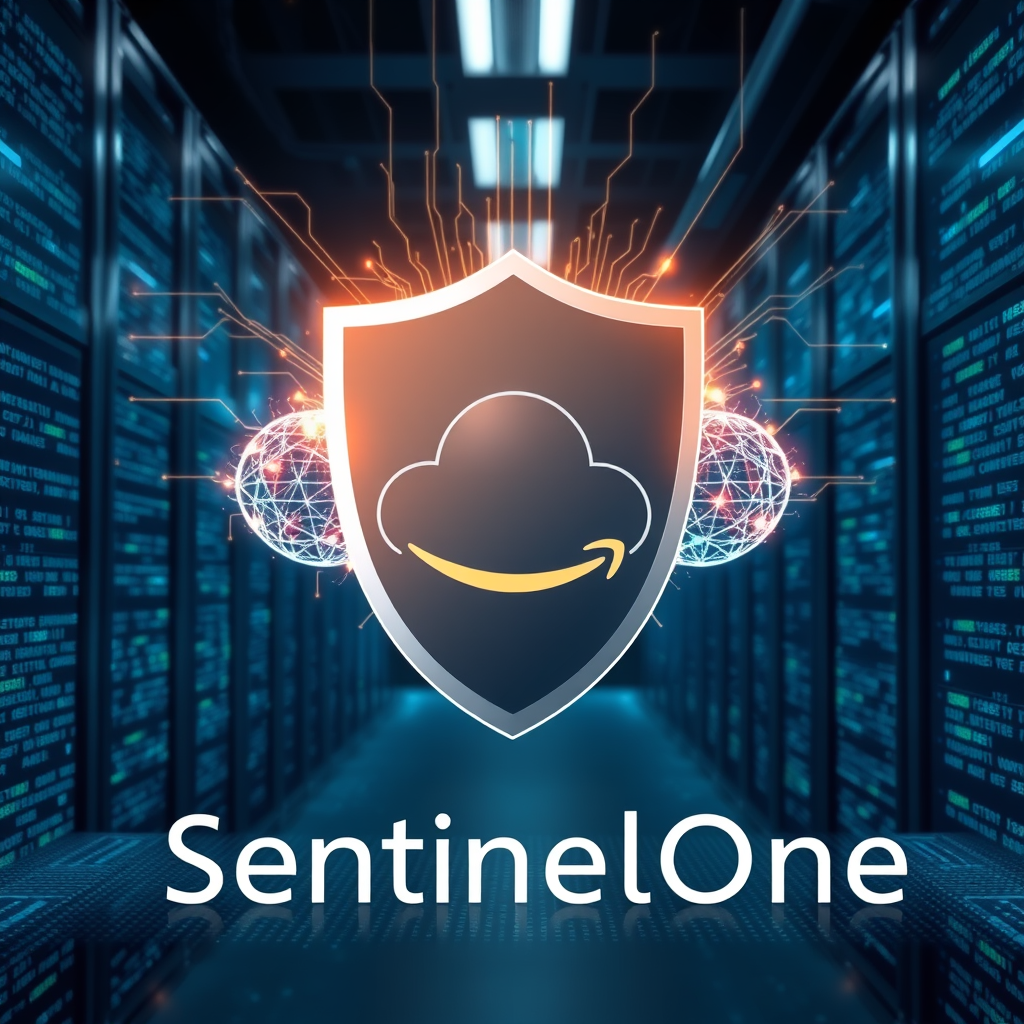
Introduction
In an era where artificial intelligence is becoming the backbone of digital transformation, the security of AI workloads has emerged as a critical concern. Traditional security solutions, often built around signature‑based detection and manual response, struggle to keep pace with the rapid evolution of threats that target cloud‑native environments. Recognizing this gap, SentinelOne, a pioneer in AI‑native cybersecurity, has announced a strategic partnership with Amazon Web Services (AWS) that promises to bring advanced, automated protection to the most widely used cloud platform in the world. The collaboration introduces a suite of new capabilities that allow customers to secure workloads, automate response, and safeguard AI innovation directly within AWS OneCon, the company’s flagship cloud security console. By leveraging SentinelOne’s machine‑learning‑driven detection engine and AWS’s expansive infrastructure, the partnership aims to deliver a seamless, end‑to‑end security experience that is both scalable and highly responsive.
The announcement comes at a time when enterprises are accelerating their adoption of AI and machine‑learning models, often deploying them in distributed, multi‑cloud environments. The risk landscape has shifted from simple malware to sophisticated adversarial attacks that can manipulate model inputs, steal intellectual property, or exfiltrate sensitive data. In this context, the integration of AI‑native security directly into the cloud platform is not just a convenience—it is a necessity. The new designations and integrations announced by SentinelOne and AWS promise to give organizations the tools they need to defend against evolving threats while maintaining the agility required for AI innovation.
In the sections that follow, we will explore the technical underpinnings of this partnership, the practical benefits it offers to customers, and the broader implications for the future of AI security in the cloud.
Main Content
AI‑Native Security Architecture
SentinelOne’s core technology is built around an autonomous, AI‑driven security engine that operates at the endpoint level. Unlike traditional security solutions that rely on predefined rules or signatures, SentinelOne’s approach uses deep learning models trained on millions of attack vectors to detect malicious behavior in real time. This architecture enables the system to identify zero‑day exploits, fileless attacks, and sophisticated malware that would otherwise evade conventional defenses.
When integrated with AWS, this AI engine is extended to the cloud environment, allowing it to monitor virtual machines, containers, and serverless functions across the entire AWS ecosystem. The result is a unified security posture that spans on‑premises, hybrid, and multi‑cloud deployments, all governed by a single, AI‑powered policy engine. By embedding the detection logic directly into the cloud infrastructure, SentinelOne eliminates the latency that often hampers endpoint‑based solutions, ensuring that threats are identified and neutralized before they can propagate.
Seamless Integration with AWS OneCon
AWS OneCon is the company’s consolidated security console that provides visibility, compliance, and threat intelligence across all AWS services. The new partnership introduces a set of integrations that allow SentinelOne’s security data to flow directly into OneCon, enriching the platform with AI‑derived insights. This integration is achieved through a combination of native APIs, event‑driven architecture, and secure data pipelines that respect AWS’s stringent privacy and compliance standards.
From a user perspective, the experience is remarkably straightforward. Security teams can now view SentinelOne’s threat detection metrics alongside native AWS security logs, all within a single dashboard. This consolidation reduces the cognitive load on analysts and accelerates incident response times. Moreover, the integration supports automated playbooks that can trigger AWS native services—such as Lambda functions, Security Hub alerts, or GuardDuty findings—based on SentinelOne’s detection signals.
Automated Threat Response at Scale
One of the most compelling aspects of the partnership is the ability to automate response actions across the entire AWS environment. SentinelOne’s autonomous response engine can isolate compromised instances, roll back malicious changes, and even patch vulnerabilities without human intervention. When coupled with AWS’s automation capabilities, these actions can be executed at scale, covering thousands of resources in seconds.
For example, if SentinelOne detects a ransomware payload attempting to encrypt files on an EC2 instance, the system can automatically quarantine the instance, trigger a Lambda function that restores the affected data from an S3 snapshot, and notify the security team via SNS. This level of automation not only reduces the window of exposure but also frees analysts to focus on higher‑level strategic tasks.
Protecting AI Workloads and Innovation
AI workloads are particularly vulnerable because they often involve large datasets, complex model architectures, and high‑value intellectual property. The partnership addresses these unique risks by extending SentinelOne’s protection to the entire AI pipeline—from data ingestion and model training to inference and deployment.
Consider a scenario where a data scientist is training a deep‑learning model on a massive image dataset stored in S3. SentinelOne monitors the training environment for anomalous behavior, such as unauthorized data exfiltration or tampering with model weights. If an adversary attempts to poison the training data, the AI engine can detect the irregularity and halt the training process, preventing a compromised model from reaching production.
Furthermore, the integration with AWS SageMaker, a managed service for building, training, and deploying machine‑learning models, ensures that security policies are enforced at every stage. By embedding SentinelOne’s detection logic into SageMaker notebooks, data scientists can receive real‑time alerts about potential threats, allowing them to take corrective action before the model is deployed.
Strategic Implications for Cloud Security
The collaboration between SentinelOne and AWS signals a broader shift toward AI‑driven security solutions that are tightly coupled with cloud platforms. As organizations increasingly rely on cloud-native services for their AI initiatives, the need for security solutions that can keep pace with rapid deployment cycles becomes paramount.
From a strategic standpoint, this partnership offers several advantages. First, it reduces the complexity of managing multiple security vendors by consolidating detection, response, and compliance into a single ecosystem. Second, it enhances the overall security posture by providing continuous, AI‑based monitoring that adapts to new threats in real time. Finally, it accelerates the adoption of AI by mitigating the perceived risk associated with deploying sensitive workloads in the cloud.
In the long term, we can expect to see more cloud providers partnering with AI‑native security vendors, creating an ecosystem where security is not an afterthought but an integral part of the cloud experience. This trend will likely drive innovation in threat intelligence, automated response, and compliance automation, ultimately leading to a safer and more resilient AI ecosystem.
Conclusion
The partnership between SentinelOne and AWS represents a significant milestone in the evolution of cloud security. By marrying SentinelOne’s AI‑native detection engine with AWS’s expansive infrastructure and automation capabilities, the collaboration delivers a comprehensive security solution that protects AI workloads from the ground up. The integration into AWS OneCon provides a unified view of threats, while automated response mechanisms ensure that incidents are contained swiftly and efficiently.
For organizations that are investing heavily in AI and machine‑learning, the stakes have never been higher. The ability to secure data, models, and inference pipelines against sophisticated adversaries is essential to maintaining competitive advantage and protecting intellectual property. With this partnership, enterprises now have a powerful toolset that not only detects threats but also responds proactively, reducing the risk of data breaches and downtime.
As the threat landscape continues to evolve, the need for AI‑driven security that can scale with cloud workloads will only grow. SentinelOne and AWS are positioning themselves at the forefront of this shift, offering a solution that is both technically robust and operationally efficient. The future of AI security in the cloud is here, and it is powered by intelligence, automation, and collaboration.
Call to Action
If your organization is deploying AI workloads on AWS, now is the time to evaluate how SentinelOne’s AI‑native security can enhance your protection strategy. Reach out to your AWS account manager or contact SentinelOne’s sales team to schedule a demo and discover how the new integrations can be tailored to your specific use cases. By integrating AI‑driven detection and automated response into your cloud environment, you can safeguard your data, models, and reputation while accelerating innovation. Don’t let security be a bottleneck—embrace the future of AI security today.
